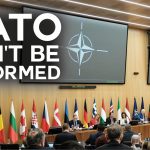Breivik, Blogging and How Not to Study Terrorism
Claims in early editions of newspapers following the appalling attacks in Norway last Friday that an Islamic group had claimed responsibility have led onto a flurry of accusations regarding the Islamophobia of the media and the experts on which it depends. I have to admit to a measure of sympathy in this case for the person responsible. William McCants, security expert, US government advisor and adjunct at John Hopkins has taken a lot of flak for announcing his discovery on the forum Shmukh, of what looked like an admission of responsibility by a jihadi group. I certainly don’t buy into conspiracy theories circulating the net that suggest this was somehow deliberate misinformation. And the fact that Shmukh is a closed forum, password protected and frequently offline does not mean that McCants is somehow making it all up. I do think he was much too hasty in publishing what seems to have been an otherwise quite uncorroborated claim – particularly given an attack which, as it unfolded, hardly fitted with the typical modus operandi of Al Qaeda sympathisers in the West.
In a wider sense, however, the background to this incident suggests that there is quite a lot which the academic study of terrorism and political violence has to answer for. In particular, the emergence of a person like Breivik forces some disturbing questions about how the supposed relationship between terrorism and the Internet has been addressed by some scholars.
In 2006, Gabriel Weimann, a media studies professor at the University of Haifa, published a book called Terror on the Internet: The New Arena, The New Challenges. The book aimed to present a picture of a new and worrying threat: the infestation of the Internet by terrorist groups. The growth in this apparent phenomenon was alarming. In 1998, when he started monitoring the situation, ‘fewer than half of the thirty organisations designated [by the US State Department] as foreign terrorist organisations maintained Web sites’. By the time his book came out, this number had increased to ‘4,300 ‘sites serving terrorists and their supporters’. In particular, he insisted: ‘our findings reveal a proliferation of radical Islamic Web sites. This is not a methodological bias but rather a significant trend highlighted in out study’.
Weimann did not make clear what precise methodological criteria enabled him to identify a ‘radical Islamic Web site’ and still less why it was appropriate to classify these as ‘sites serving terrorists and their supporters’. Nor did he relate precisely what proportion of his overall tally of ‘terrorist’ websites consisted of such cases. Two years later, however, he had updated his figure: now there were, so he said, no fewer than 5,300 Al Qaeda websites.
Soon it was argued that Weimann’s alarming figure was actually a conservative one. Using automated Web crawling methods, similar to those employed by Google, computer scientists at the University of Arizona ‘Dark Web Portal’ project announced that there could be as many as 50,000 of these terrorist sites. Specifically, the group identified an online ‘Jihad Terrorism Network’ including clear networked clusters centring around Al Qaeda, Hezbollah, ‘Palestinian Terrorist Groups’ and Hizb ut-Tahrir.
I shouldn’t have to spell out the highly tendentious nature of such an approach. Hezbollah and ‘Palestinian Terrorist Groups’ have indeed carried out acts (at various times) which can readily be defined as terrorism. But this is only a tiny fraction of their overall activity.
Once we extend the net not only to the actual websites of such groups, but also to those of ‘supporters’ it should be plain that we are really just talking about large swathes of the online presence of ordinary Palestinian and Lebanese Shiite society. Even the content of supporters of Al Qaeda often does not promote terrorism as such in any clear sense, being much more concerned with operations against uniformed soldiers in Afghanistan and Iraq than with calling for the murder of civilians elsewhere.
While both of the examples I have just mentioned were produced by professional academic researchers with university posts, they fit into one end of a wider milieu of online jihadi-spotting which encompasses private intelligence (SITE Intel Group), NGOs (The Anti-Defamation League), military academies (Westpoint) and ultimately a wide range of amateur enthusiasts sustained by a network of blogs and sites such as (in rough order of extremeness) Militant Islam Monitor, Jihad Watch, Gates of Vienna and so on. These latter sites, under the tutelage of figures such as Robert Spencer, campaign tirelessly to promote the idea of Islam itself as an existential threat to Western civilisation and what they see as the treachery of Western liberals in their policy of appeasement towards it.
Readers may by now see where I am going with this. Since the atrocious murder of 76 people by Anders Breivik, commentators have been quick to point out his intellectual connection to the emerging transnational Islamophobic movement represented by ‘cultural conservatives’ in Europe, and the Tea Party in the USA. While most have sought to stress their condemnation of the massacre, there is already talk within this scene of conspiracy theories, false flag operations and (ironically) a Reichstag fire.
Of course, it would be utterly silly for me to suggest that all the people and institutions I have just listed are somehow complicit in Breivik’s crime. I should hope not. I myself study self-described ‘jihadist’ material on the Internet (though I prefer to study it as a subcultural online phenomenon in its own right, rather than jumping to conclusions about its necessary relationship with ‘terrorism’ in the real world).
But the silliness of making sweeping inferences based on broad network models is precisely my point. I have no doubt that, were I to apply the same kind of analysis carried out by proponents of the ‘terrorist’/jihadist online threat, I would very easily be able to produce a network of ‘supporters of neo-Crusadism’ or some such term at whose collective door I could lay the blood guilt for the victims of Utoeya island and Oslo. And ironically, such a network might well include at its fringes some of those same people who have been responsible for sweeping analyses of ‘terror on the Internet’ in the first place.
And yet, as distasteful as I find the opinions of Spencer and his ilk, they are not responsible for what Breivik did, and still less those at whom we might arrive by the logic of six degrees of separation.
Indeed, it is precisely by lumping opinions together into reified political actors, by treating the individual acts of specific people as the deeds of a single, many-handed monster, that we help to bring such a beast to life. The ‘war on terror’ did just such after 9/11.
Let’s not make the same mistake twice.




My default position on ideologies is indeed somewhat sceptical, though I would agree with you that ideology is at least a useful heuristic. But I think that what I am really concerned with in this piece is the crude and counterproductive way in which certain postures and attitudes identified with ‘radical’ Islam came to be presented as an effective cause of terrorism (no space to go into it here, but I think that both centre-right and centre-left were in interesting ways responsible for this). I was expressing my hope that we can avoid giving unintentional support to emerging new right wing frames.
Am I claiming that this event is memetically inexplicable? Acts of terrorism fit into an ideological context by definition. And the particulars of this attack were clearly shaped by a particular set of ideas. And of course a lot of those ideas are shared by other people, who are to some extent conscious that they mutually share them. But I’m not sure how far that’s an explanation. I mean I’m just not sure. I don’t think I have a settled position yet.
You say that ideologies are made to exist by individual actions. It’s an interesting comment. As Muhammad Siddique Khan said: ‘our words are dead until we give them life with our blood’. That’s exactly what worries me.
A very eloquent and informed dissection of the furore, but the concluding remarks trouble me.
“Indeed, it is precisely by lumping opinions together into reified political actors, by treating the individual acts of specific people as the deeds of a single, many-handed monster, that we help to bring such a beast to life.”
Are you attempting to refute any memetic archaeology of ideologies? For example; without the acts of individual voters, democracy doesn’t exist. Free market capitalism only exists through the individual actions of CEOs.
*Ideologies do exist* and they are made to exist by individual actions. How far (and accurately) we take that premise in this example is a further matter for discussion, but I fear you have taken the easy route and mystified this event as memetically unexplainable.
Thanks for that. I was wondering what you thought about it. It is easier to see the absurdity of generalising from the particular when you try to find a connection between the Tea Party and the Norwegian massacre – because it all happens within a cultural context that we northerners understand. I’d like to think that this ghastly event may at least stop a few people in their tracks when they find themselves confusing any one thing with any other thing in future….
Wise words but I fear they’ll fall on deaf ears.
Some people are still blaming the jews for everything:
http://hurryupharry.org/2011/07/24/head-of-waltham-forest-psc-israel-sponsored-anders-breiviks-terror/#more-56980